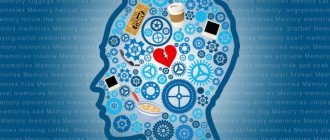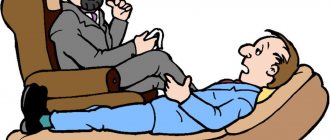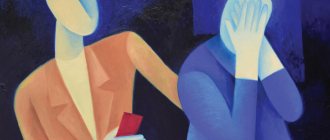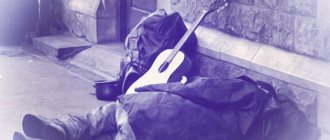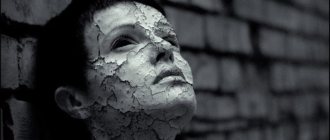General information
Affective-respiratory attacks are attacks of spasmodic crying or severe anxiety of a child with “sunset” in conditions of a negative emotional reaction. They are most often observed in children from six months to one and a half years and manifest themselves in the form of episodic short-term breath holding ( apnea ), which can be accompanied by apneic convulsions and loss of consciousness .
Despite the frightening manifestations, seizures are not life-threatening for the child, and subsequently, upon reaching the age of three to five, they disappear spontaneously, and therefore do not require treatment. No more than 5% of the population suffers from affective-respiratory attacks, regardless of the gender of the child. A positive family history was identified in 25% of cases.
Diagnostics
Establishing a diagnosis of dyslexia in adults and children is a complex task, since difficulties in the reading process can arise for a variety of reasons: developmental delays, pedagogical neglect, hearing and vision impairment (for example, myopia), and so on. Dyslexia is characterized by the fact that the child makes the same mistakes, despite working with teachers and parents, so we are talking about the need to correct dyslexia .
It is worth noting that dyslexia is not a mental illness and is diagnosed by a number of doctors through a wide variety of tests.
Pathogenesis
Affective-respiratory manifestations occur in conditions of increased nervous reflex excitability and a tendency to hysteroid reactions. When a child cries or screams, a spasm of the larynx occurs and breath holding may occur during the inhalation stage, which causes pallor or cyanosis of both the skin and mucous membranes of the mouth. The result of developing hypoxia is a disruption of the regulation of the autonomic nervous system, the development of tonic convulsions, and short-term fainting, which last from several seconds to several minutes.
Why do seizures occur?
The leading causes are hereditary. There are children who are excitable from birth, and there are character traits of their parents that involuntarily provoke these attacks. The parents of such children also experienced bouts of “rolling down” in childhood . In children, affective-respiratory paroxysms can occur in response to the following situations and stimuli:
- adults ignoring the child’s demands;
- lack of parental attention;
- fright;
- excitation;
- fatigue;
- stress;
- overload with impressions;
- falls;
- injuries and burns;
- family scandal;
- communication with an unpleasant (from the child’s point of view) relative.
Adults must understand that the child reacts this way unconsciously, and not at all intentionally. This is a temporary and abnormal physiological reaction that is not under the child's control. The fact that a child has such a reaction is “to blame” for the characteristics of his nervous system, which cannot be changed. A child was born this way, early age is the beginning of all manifestations. This needs to be corrected by pedagogical measures in order to avoid character problems at an older age.
What does it look like?
Pediatricians conditionally divide affective-respiratory syndrome into 4 types. The classification is as follows:
- A simple option, or holding your breath at the end of the exhalation. Most often develops after a child’s dissatisfaction or trauma. Breathing is restored on its own, and blood oxygen saturation does not decrease.
- The “blue” option, which most often occurs after a pain reaction. After crying, a forced exhalation occurs, the mouth is open, the child does not make any sounds - “rolled”. Rolling of the eyes and cessation of breathing are visible. The baby first turns bright red, then turns blue, then goes limp, and sometimes loses consciousness. Some regain consciousness after regaining their breathing, while others immediately fall asleep for an hour or two. If you record an EEG (encephalography) during an attack, there are no changes in it.
- “White” type, in which the child almost does not cry, but turns sharply pale and immediately loses consciousness. Then comes sleep, after which there are no consequences. No seizure focus is detected on the EEG.
- Complicated - begins as one of the previous ones, but then paroxysms are added, similar to an epileptic attack, which can even be accompanied by urinary incontinence. However, subsequent examination does not reveal any changes. This condition can pose a danger to all tissues due to severe oxygen starvation, or brain hypoxia.
Such convulsions do not pose a threat to life, but consultation with a neurologist is required in order to distinguish them from more severe cases. Breathing stops for a period of time from several seconds to 7 minutes, and it is very difficult for parents to maintain composure. The average time to stop breathing is 60 seconds.
Mechanism of development and clinical picture
Seizures look scary, especially in infants. When a child stops breathing, the supply of oxygen to the body stops. If you hold your breath for a long time, muscle tone reflexively drops - the baby “goes limp.” This is a reaction to acute oxygen deficiency to which the brain is exposed. A protective inhibition occurs in the brain, its work is restructured to consume as little oxygen as possible. Eye rolling ensues, which greatly frightens parents.
With continued holding of breath, the muscles sharply increase tone, the child’s body tenses, arches, and clonic convulsions may occur - rhythmic twitching of the torso and limbs.
All this leads to the accumulation of carbon dioxide in the body - hypercapnia. This reflexively stops the spasm of the laryngeal muscles, and the baby takes a breath. Inhalation is usually done while crying, then the child breathes well and calmly.
In practice, seizures rarely occur. After apnea, the child usually immediately stops rolling; in some, breathing is restored after “going limp.”
Breathing and emotions
It’s not for nothing that the attack is called an affective-respiratory attack, or ARP for short. This is how a small child expresses his anger and dissatisfaction if something is done “not according to him.” This is a real affect, an emotional attack. Such a child is initially characterized by increased emotional excitability and capriciousness. If we leave character traits without attention, then at an older age the child gives real hysterical reactions if he is denied something: he falls to the floor, yells at the entire store or kindergarten, stomps his feet and calms down only when he gets what he wants. The reasons for this are twofold: on the one hand, the child has hereditary characteristics of the nervous system, on the other, the parents do not know how to treat him in such a way as to smooth out all the “corners” of his character.
Classification
Depending on the pathogenesis and completeness of the clinical picture, effective respiratory attacks in children are of different types:
- The usual type is a classic manifestation of an affective-respiratory attack - holding your breath while inhaling, which occurs as a result of injury or frustration - the inability to satisfy certain needs, outwardly resembles laryngospasm .
- Blue type - neurotic or neurosis-like attacks are the result of anger, frustration, and sometimes pain; while crying, the child may exhale forcibly, holding his breath occurs, which causes vegetative-vascular disorders: cyanosis (blueness of the skin), loss of muscle tone, dilated pupils and syncope, most often children regain consciousness on their own or fall asleep for several hours; This type of affective-respiratory seizures is characterized by the absence of a postictal phase and a normal EEG.
- Pale or white type (affective-respiratory syncopation) - unlike the blue type, it causes pallor of the skin, asystole and occurs during crying or its absence; also, with a normal EEG, it leads to fainting and does not have a post-ictal phase.
- Affectively provoked epileptic seizures or the so-called complicated type are considered a more pronounced and severe form of the types of seizures described above, which begin as “blue” or “pale” and turn into a pseudo-epileptic seizure; the EEG outside of seizures is usually normal.
Causes
As a manifestation of a heightened emotional state, affective-respiratory seizures are the earliest manifestation of hysterical paroxysms and usually occur in response to:
- feelings of disappointment, anger, fear, joy and other strong emotional shocks;
- force feeding;
- severe pain, for example, when falling from a height, “pale syncopation” occurs as a result of reflex asystole, which is especially dangerous for children with heart disease.
neurasthenia and neurosis , overprotection, vitamin D metabolism disorders, hypocalcemia and hypohemoglobinemia can contribute to the development of attacks of abnormal breathing .
Consequences of dyslexia
A child with such a disease faces significant problems that are associated with the complexity of grasping the meaning of the text. The process of deference takes a longer period of time, which results in low performance in educational institutions. Because dyslexics spend little time reading, they may have a small vocabulary. In addition, such people are characterized by poor orientation in space, the inability to self-organize, imbalance and low self-esteem.
consequences of dyslexia
Symptoms
Depending on the type of affective-respiratory seizure, the symptoms may differ, but in general they consist of the following reactions:
- respiratory arrest caused by screaming or crying;
- turning blue or pale;
- severe hypotension (the child goes limp);
- short-term loss of consciousness, which may be followed by several hours of sleep;
- involuntary urination;
- the occurrence of seizures.
If affective-respiratory paroxysms are not stopped in time, then subsequently the child may experience hypoxia:
- short-term loss of consciousness;
- clonic-tonic or tonic convulsions ;
- post-attack lethargy and drowsiness;
- enuresis.
Komarovsky about affective-respiratory attacks in children
The best person to explain what an affective-respiratory attack is is Dr. Komarovsky, popular and beloved by all mothers. In his television program “Ask Dr. Komarovsky,” he says that a seizure usually begins with a situation where a child is under the influence of some unpleasant external factors, for example, fear or refusal to do what he wanted, as well as pain and fright.
The child begins to cry hysterically, and his breathing stops for some time - so to speak, the child “breaks down crying.” In medical science, this condition is called an affective-respiratory attack, that is, in a state of uncontrollable negative strong emotion - in a state of passion , a sudden stop in breathing occurs.
As a rule, these paroxysms can begin after 6 months of life and, without any treatment, end sooner or later. Usually at a maximum of 4, extremely rarely - at 4.5-5 years, affective-respiratory attacks outgrow and they are a certain stage in the development of the nervous system. They, most often, do not need any treatment, although it is recommended to show the child to a doctor, because a situation can still be dangerous to health when:
- stopping breathing lasts more than a minute, this happens extremely rarely;
- in a child, severe reflex anoxic seizures with breathing stops for more than 30 seconds occur more often than 2-3 times a week.
What to do in case of affective-respiratory attacks?
The main task is to prevent the child from falling, and therefore from being injured, so it is best to calmly approach the baby, hug him, thereby preventing a fall. It is important not to make the parent himself hysterical and not to change his face. In addition, you can put something cold on the child's face or even wet your hand with cold water and splash it on the child. The main thing is to treat this calmly; the child always outgrows it if the syndrome is not a reason for personal hysterics and panic among parents and relatives.
If the seizure was provoked by the failure to fulfill the child’s wishes, then you need to understand that after the child has come to his senses, you cannot succumb to provocation - do not do what the baby wanted, do not discuss what happened and do not punish. It’s good if the mother or father pretends that nothing happened. Otherwise, you are suggesting the wrong mechanism for solving problems and contributing to the development of neurasthenia in the future.
